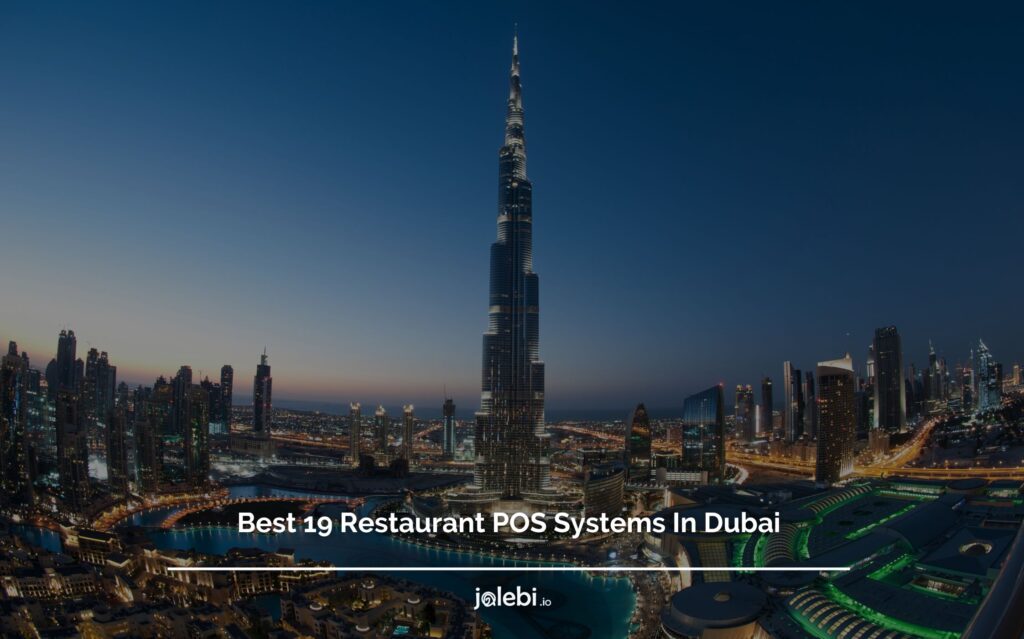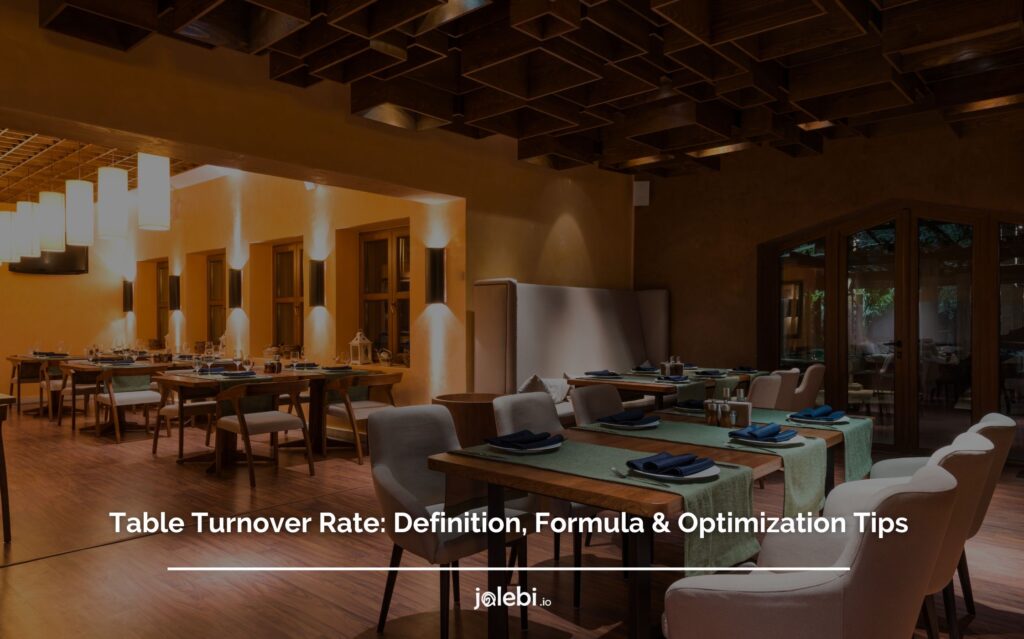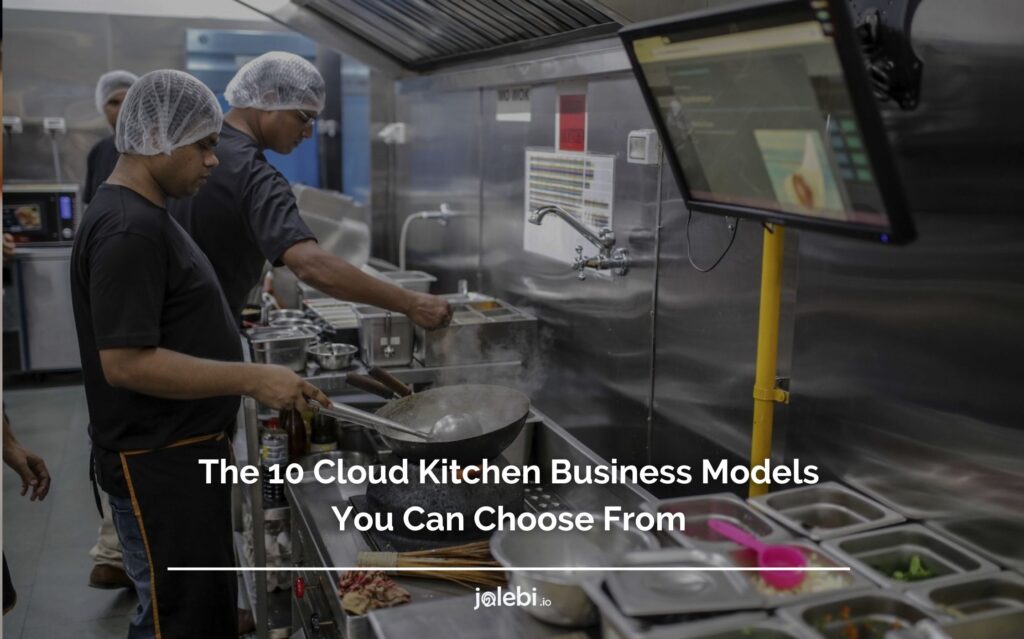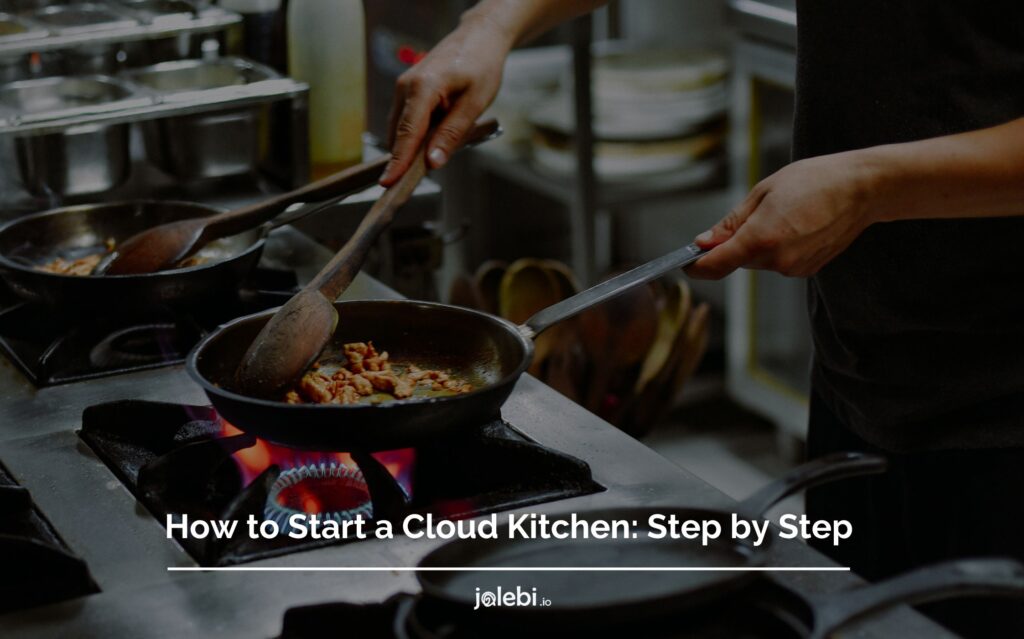Table of Contents
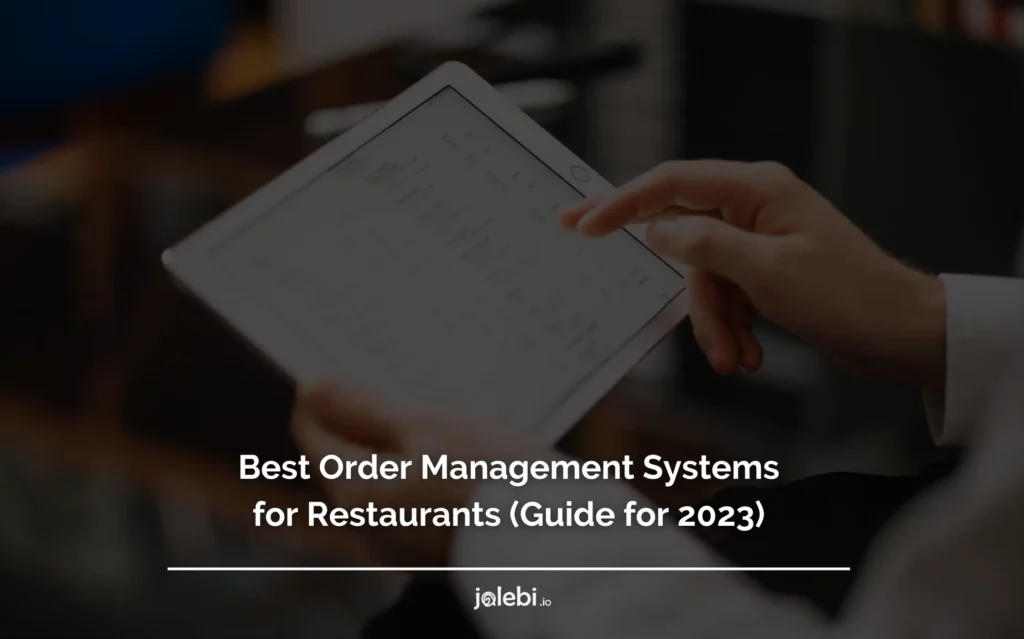
A significant majority, 60%, of consumers opt for delivery or takeout services at least once a week.
An order management system (OMS) is a crucial tool for restaurants to efficiently process and manage orders.
With the increasing reliance on technology in the food industry, having a reliable OMS can make a significant impact on streamlining operations, enhancing customer experience, boosting efficiency, and ultimately driving growth for your restaurant.
In this comprehensive article, we will explore the best order management systems for restaurants, discussing their features, benefits, and considerations to help you make an informed decision for your establishment.
What is an Order Management System?
Wondering how to organize customer orders?
An order management system is a software solution designed specifically for restaurants to manage and process customer orders efficiently.
It serves as a central hub where orders from multiple sources, such as online platforms, mobile apps, or in-house POS systems, are received, organized, and seamlessly integrated into the restaurant’s operations.
According to a survey, 45% of consumers express that the availability of mobile ordering or loyalty programs would incentivize them to utilize online ordering services more frequently.
An OMS automates various tasks, including order entry, inventory management, delivery coordination, and reporting, enhancing overall efficiency and accuracy.
With the increasing popularity of online food delivery services and the growing demand for contactless ordering options, the need for an efficient order management system has become paramount for restaurants.
An OMS not only streamlines the order processing workflow but also helps in reducing errors and improving customer satisfaction.
Providing real-time updates on order status and inventory availability enables restaurants to understand how to organize customer orders promptly and avoid any potential stockouts.
Additionally, an OMS can generate detailed reports and analytics, allowing restaurant owners to gain valuable insights into their operations and make data-driven decisions for business growth.
The Importance of a Reliable Order Management System for Restaurants
A reliable order management system is essential for restaurants to ensure smooth operations and provide a seamless customer experience.
1. Low Order Processing Time
By automating manual processes and eliminating potential errors, an OMS minimizes order processing time, reduces operational costs, and improves order accuracy.
2. Streamlined Operations
Additionally, an OMS enables real-time order tracking, inventory management, and efficient communication between kitchen staff, delivery drivers, and customers, resulting in streamlined operations and improved overall customer satisfaction.
3. Menu Optimization
Furthermore, a reliable order management system can help restaurants optimize their menu offerings and pricing strategies.
By analyzing data collected through the OMS, restaurants can identify popular dishes, customer preferences, and peak ordering times.
This information can be used to make informed decisions about menu updates, promotions, and pricing adjustments, ultimately increasing profitability and customer satisfaction.
4. Integration With Other Systems
In addition, an order management system for restaurant can integrate with other systems and platforms, such as online ordering platforms, POS systems, and third-party delivery services.
This integration allows for seamless data flow and synchronization, reducing the need for manual data entry and minimizing the risk of errors.
It also enables restaurants to easily manage and fulfill orders from multiple channels, providing a consistent and efficient experience for customers regardless of how they choose to place their orders.
Factors to Consider When Choosing an Order Management System for Your Restaurant
When selecting an order management system for your restaurant, several crucial factors need to be considered.
These include scalability, ease of use, integration capabilities with existing systems, support and training options, pricing, and industry-specific features.
Additionally, it is important to assess the system’s ability to handle your restaurant’s unique requirements, such as multiple locations, various order types, and specific cuisine needs.
Conducting a thorough evaluation based on these factors will help you select the most suitable OMS for your restaurant.
1. Scalability
Scalability is an important factor to consider when choosing an order management system for your restaurant.
As your business grows, you want a system that can easily accommodate the increasing number of orders and customers.
Look for a system that can handle high order volumes without compromising performance or causing delays.
2. Integration Capabilities
Integration capabilities with existing systems are another crucial consideration. Your restaurant may already have other software or hardware in place, such as a POS system or inventory management software.
It is essential to choose an order management system that can seamlessly integrate with these existing systems to ensure smooth operations and avoid any disruptions.
Cloud-Based vs On-Premise Order Management Systems: Pros and Cons
One of the key considerations when choosing an OMS is the deployment method – whether to opt for a cloud-based or an on-premise solution.
Cloud-Based OMS Benefits
Cloud-based OMS offers several advantages, including easy accessibility, scalability, automatic updates, and lower upfront costs.
Another advantage of cloud-based OMS is the ability to access the system from anywhere with an internet connection.
This means that restaurant owners and managers can easily monitor and manage orders, inventory, and other aspects of their business even when they are not physically present at the restaurant.
This flexibility can be especially beneficial for multi-location restaurants or for owners who are frequently on the go.
- On-Premise System
On the other hand, an on-premise system provides more control over data security and customization options but involves higher initial investment and maintenance efforts.
Understanding the pros and cons of each option can help you make an informed decision based on your restaurant’s specific needs and preferences.
How to Evaluate and Select the Right Order Management System for Your Restaurant
Choosing the right order management system requires a systematic evaluation process.
- Firstly, you need to identify your restaurant’s specific requirements and goals.
- Next, create a comprehensive checklist of essential features and evaluate each OMS based on these criteria.
- Additionally, consider reading customer reviews and case studies, requesting product demos, and seeking recommendations from industry experts.
- Furthermore, it is important to consider the scalability and flexibility of the order management system. As your restaurant grows and evolves, you may need to accommodate changes in your operations and customer demands. Therefore, choose an OMS that can easily adapt and scale with your business.
Top Features to Look for in an Order Management System for Restaurants
When assessing order management systems for restaurants, it is crucial to consider the features that can streamline your restaurant’s operations.
– Key features to look for include real-time order tracking, inventory management, menu customization, integration with POS systems and online platforms, driver management tools, reporting and analytics capabilities, and seamless communication channels.
– Additionally, mobile accessibility, customer relationship management (CRM) integration and intuitive user interfaces are also important aspects to consider when evaluating OMS options.
– Another important feature to consider when evaluating an order management system for restaurants is the ability to handle multiple order types. Restaurants often receive orders through various channels, such as dine-in, takeout, delivery, and online platforms.
– An effective OMS should be able to seamlessly manage and track orders from different sources, ensuring that each order is processed accurately and efficiently. This feature can help streamline operations and improve customer satisfaction by reducing errors and delays in order fulfillment.
Streamlining Operations with an Integrated Order Management System
An integrated order management system for restaurant is a game-changer for restaurants, as it consolidates various operational processes into a single platform, eliminating manual data entry and communication gaps.
- With an integrated OMS, you can effortlessly keep track of orders from multiple sources, update inventory in real-time, optimize delivery routes, and ensure accurate communication between staff and customers.
This integration results in increased operational efficiency, reduced errors, minimized costs, and enhanced overall customer satisfaction.
- Furthermore, an integrated order management system also provides valuable insights and analytics that can help restaurants make data-driven decisions.
By analyzing order patterns, customer preferences, and sales trends, restaurant owners and managers can identify opportunities for menu optimization, targeted marketing campaigns, and strategic business growth.
The ability to access and analyze this data in real time allows for agile decision-making and the ability to adapt quickly to changing market demands.
Enhancing Customer Experience with a Seamless Order Management System
A seamless order management system plays a paramount role in enhancing the overall customer experience.
By automating order processing, ensuring accurate delivery estimates, and providing real-time order tracking, an OMS creates transparency and builds trust with your customers.
Moreover, features that enable restaurants to keep track of orders, offer personalized menus, order history tracking, and loyalty program integration lead to personalized customer experiences, driving customer loyalty and repeat business.
Prioritizing a seamless OMS will inevitably lead to enhanced customer satisfaction, positive reviews, and increased revenue for your restaurant.
Integrating Online Ordering Platforms with Your Restaurant’s Order Management System
With the surge in online food delivery and takeaway services, integrating online ordering platforms with your restaurant’s OMS is crucial for success.
The seamless integration between your online platforms and OMS enables automatic order transmission, real-time inventory updates, and streamlined delivery coordination.
This integration not only saves time but also ensures accurate order processing and minimizes errors. By providing a seamless online ordering experience, your restaurant can attract new customers, increase revenue, and stay competitive in the digital era.
Managing Inventory and Stock Levels with an Effective Order Management System
Efficient inventory management is vital for restaurants to avoid wastage, stockouts, and overordering.
With an effective order management system, you can maintain accurate and up-to-date inventory records, set automatic reorder points, and monitor stock levels in real time.
By streamlining inventory management processes, an OMS helps reduce food costs, prevent shortages, and improve overall operational efficiency.
Additionally, advanced features like ingredient-level tracking and recipe management further optimize inventory control, ensuring optimal resource allocation and minimizing costs.
Improving Communication and Collaboration with a Centralized Order Management System
A centralized order management system facilitates improved communication and collaboration within your restaurant.
By providing a centralized platform for order management, OMS enables seamless communication between front-of-house staff, kitchen staff, and delivery drivers. Real-time notifications about order updates, special requests, or changes ensure smooth coordination and minimize errors.
Moreover, internal messaging features and shared order notes promote effective communication and collaboration, resulting in efficient operations and satisfied customers.
Ensuring Data Security and Compliance with Your Restaurant’s Order Management System
When implementing an order management system, data security, and compliance should be top priorities.
It is crucial to select an OMS provider that prioritizes data protection and implements robust security measures, including encryption, secure payment gateways, and restricted access controls.
Additionally, compliance with industry-specific regulations, such as data protection laws and PCI-DSS for payment card processing, is essential to prevent data breaches and legal consequences.
Ensuring data security and compliance safeguard your restaurant’s reputation and customer trust.
Optimizing Delivery and Fulfillment Processes with the Right Order Management System
The delivery and fulfillment processes have become critical for restaurants in the current climate.
An efficient order management system optimizes these processes by streamlining order routing, providing real-time GPS tracking for drivers, and transparently communicating delivery status to customers.
Additionally, features like delivery driver management, route optimization, and customer notifications further enhance the entire delivery experience.
By optimizing the delivery and fulfillment processes, an OMS reduces delivery time, ensures accurate order tracking, and ultimately improves customer satisfaction.
Scaling Your Restaurant Business with a Scalable Order Management System
A scalable order management system is essential for restaurants that plan to expand and cater to increasing order volumes.
Scalability allows your OMS to handle growing order loads, customer bases, and multiple locations without sacrificing performance or efficiency.
When choosing an OMS, evaluate its ability to accommodate your restaurant’s future growth plans and scalability needs. Scalability eliminates limitations and ensures that your chosen OMS can grow alongside your business, facilitating smooth operations and seamless customer experiences.
Real-Time Reporting and Analytics: Leveraging Data Insights from Your OMS
An order management system equipped with real-time reporting and analytics capabilities empowers you to leverage valuable data insights.
By analyzing customer behavior, order trends, and operational performance, you can make informed decisions to optimize your restaurant’s processes and profitability.
Real-time reporting dashboards enable instant visibility into revenue, order volume, and customer satisfaction metrics.
Utilizing data insights from your OMS facilitates data-driven decision-making, identifying areas for improvement, and capitalizing on growth opportunities.
Training and Support: Essential Considerations for Implementing an OMS in Your Restaurant
Effective training and support are crucial when implementing an order management system in your restaurant.
Ensure that your selected OMS provider offers comprehensive training programs and ongoing support to maximize your team’s efficiency and adoption of the system.
Additionally, user-friendly interfaces and intuitive design contribute to the ease of adoption and reduce training barriers.
Prioritizing training and support during the OMS implementation process will enhance user competence, ensure a smooth transition, and optimize the system’s benefits for your restaurant.
Case Studies: Success Stories of Restaurants Using Effective Order Management Systems
Examining case studies of successful restaurants utilizing effective order management systems can provide valuable insights and inspiration.
These case studies highlight how businesses have overcome challenges, optimized operations, and achieved significant growth with the help of their chosen OMS.
By studying success stories, you can identify best practices, learn from real-world experiences, and gain additional confidence in the potential benefits of implementing an order management system for your restaurant.
Cost-Benefit Analysis: Calculating the ROI of Investing in an OMS for Your Restaurant
Conducting a comprehensive cost-benefit analysis is critical before investing in an order management system. Evaluate the upfront costs, ongoing maintenance fees, and potential savings in terms of labor costs, order accuracy, inventory management, and improved customer satisfaction.
By quantifying the potential return on investment (ROI), you can make an informed decision and justify the investment to stakeholders.
While the initial investment in an OMS may seem substantial, the long-term benefits and operational efficiencies gained often outweigh the costs.
Future Trends in Restaurant Order Management Systems: What to Expect?
The future of order management systems in the restaurant industry is promising as new technological advancements continue to revolutionize the way restaurants operate.
Some future trends to expect include enhanced mobile capabilities, AI-driven automation, voice ordering integration, and further integration with third-party food delivery platforms.
The adoption of these emerging technologies will drive operational efficiency, improve customer experiences, and provide new avenues for growth in the restaurant industry.
Staying updated with emerging trends ensures that your restaurant remains competitive and at the forefront of technological advancements.
Best Practices for Implementing and Maximizing the Benefits of an OMS in Your Restaurant
Implementing an order management system successfully requires adherence to best practices.
- Start by identifying key stakeholders and involving them in the evaluation and decision-making process.
- Additionally, plan and execute a well-structured implementation strategy, including data migration, staff training, and system integration.
- Ongoing monitoring of system performance, continuous improvement based on feedback, and regular updates are essential for maximizing the benefits of your OMS.
By following established best practices, your restaurant can ensure a smooth implementation and fully leverage the advantages of an order management system.
Troubleshooting Common Issues and Challenges When Using an OMS in Restaurants
While order management systems provide numerous benefits, there may be occasional challenges to address.
Common issues include system integration difficulties, user adoption challenges, and technical glitches.
Effective troubleshooting methods involve proactive communication with your OMS provider, comprehensive user training, and regular system updates.
Additionally, leveraging online forums, discussion groups, and industry experts can help solve specific challenges and gain insights into best practices.
By effectively troubleshooting issues, your restaurant can overcome obstacles and maintain optimal performance and customer satisfaction.
Partner With jalebi’s Order Management System To Streamline Your Restaurant Operations
Are you looking to optimize your restaurant operations and deliver exceptional customer experiences? Look no further than jalebi’s order management system.
By partnering with us, you gain access to a robust and user-friendly platform that streamlines the entire order management process.
From efficient order-taking to seamless order tracking and delivery, our system enhances operational efficiency and reduces errors.
With features like real-time inventory management, menu customization, and integration with popular delivery platforms, we empower you to provide top-notch service and stay ahead of the competition.
Join forces with jalebi’s order management system to revolutionize your restaurant operations and delight your customers every step of the way.
Conclusion
Investing in the right order management system is critical for restaurants that strive for operational excellence and aim to deliver exceptional customer experiences.
By considering factors such as features, scalability, integration capabilities, and cost-benefit analysis, you can make an informed decision when selecting an OMS.
Implementing an effective OMS enables streamlined operations, enhanced customer satisfaction, and increased efficiency, and ultimately drives growth for your restaurant.
By harnessing the power of technology with a reliable OMS, your restaurant can pave the way for success in the digital age.
Read more:
- What Does MP Mean in Restaurant Industry?
- Discover Top Strategies to Optimize Your Cloud Kitchen Operations

